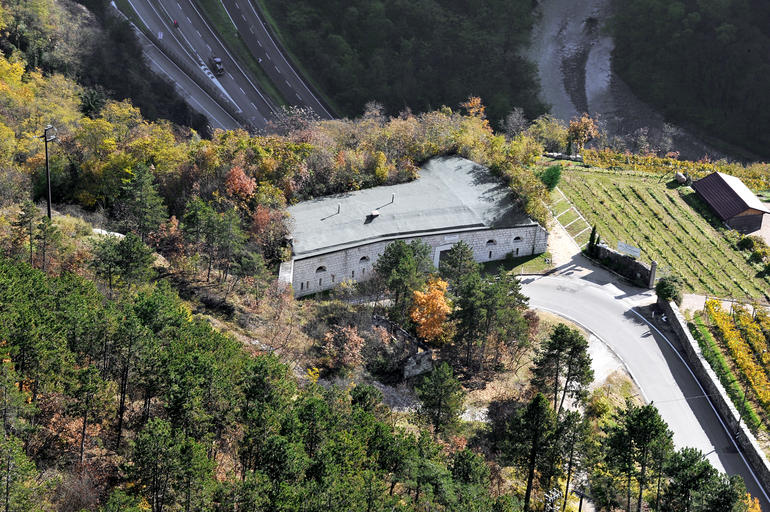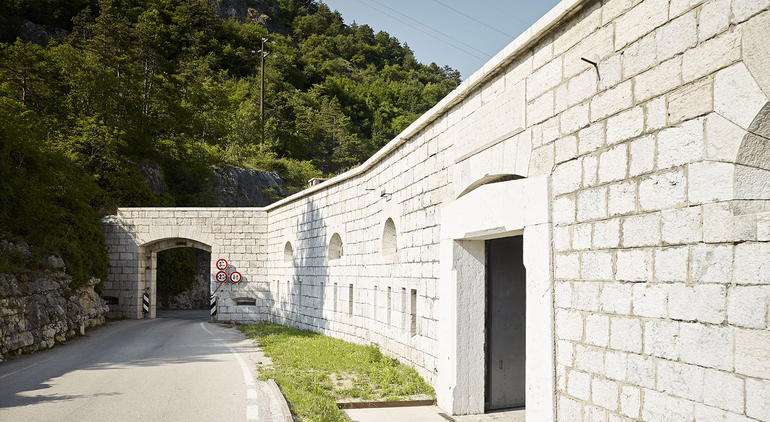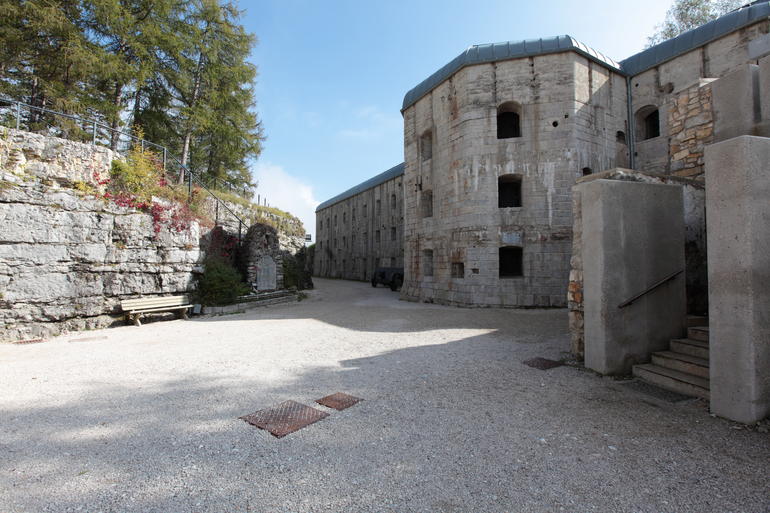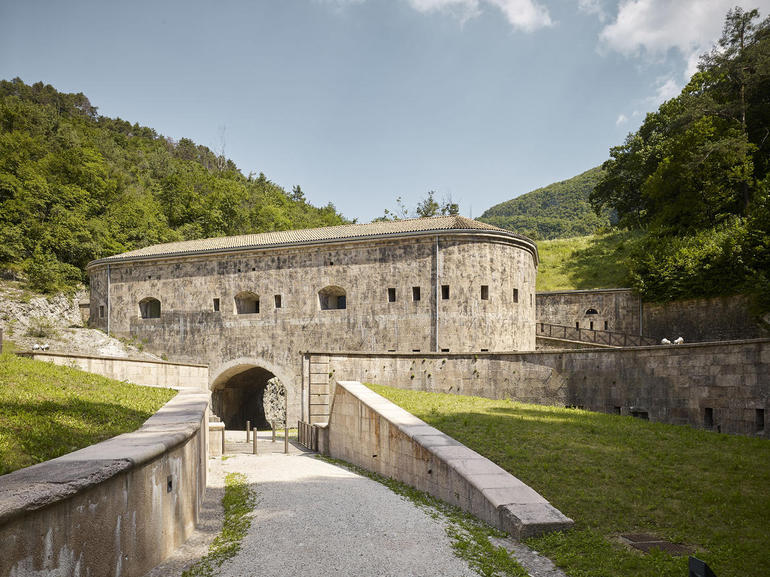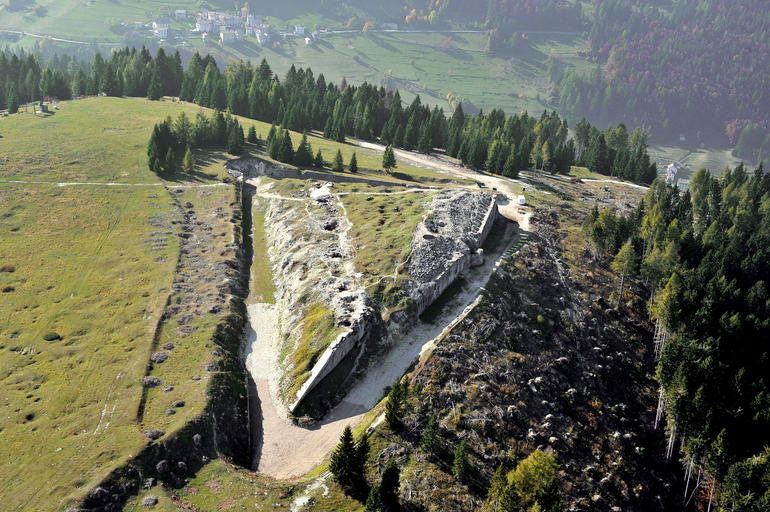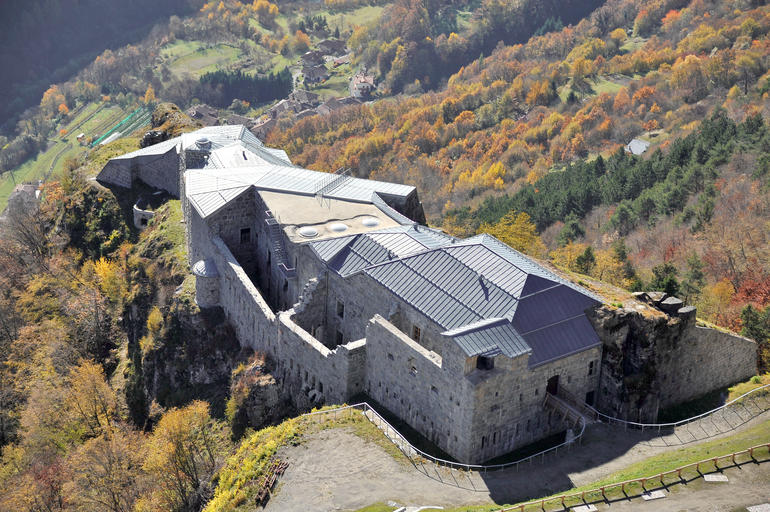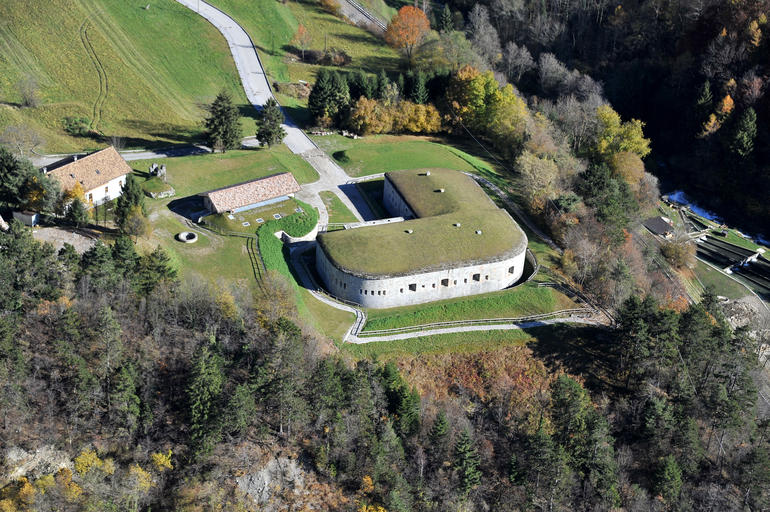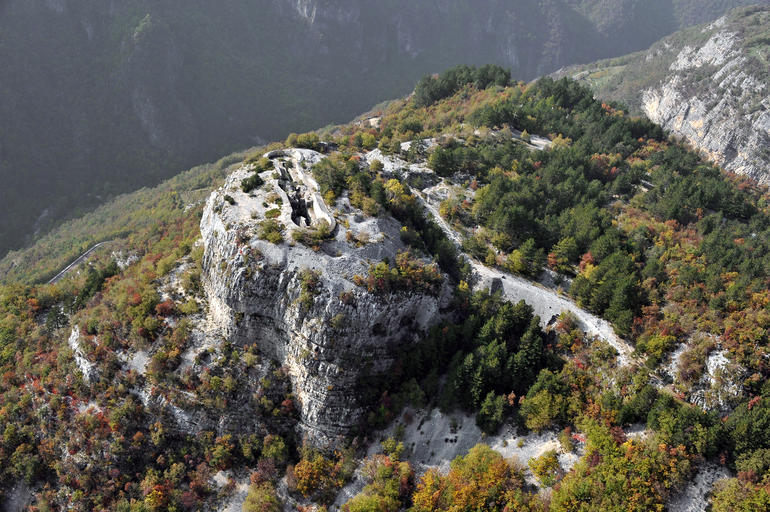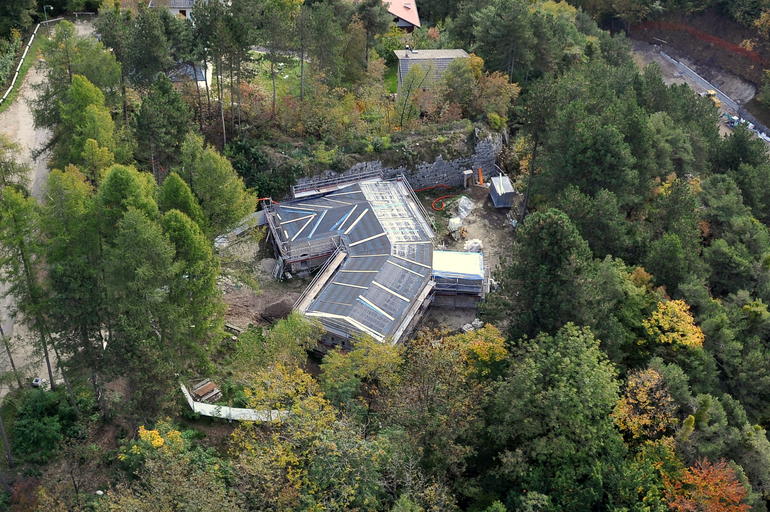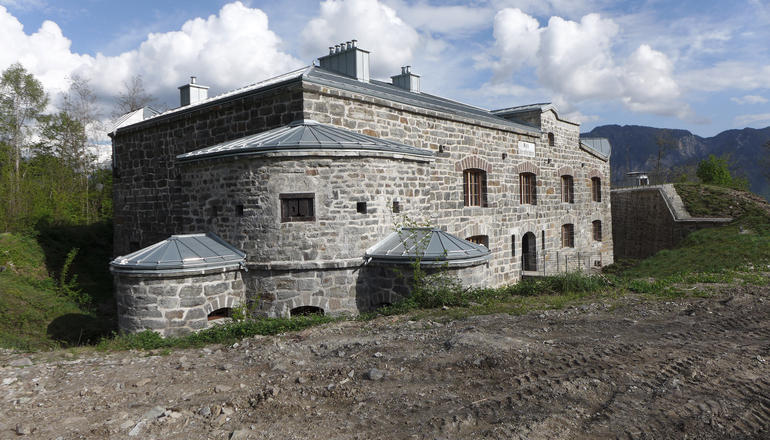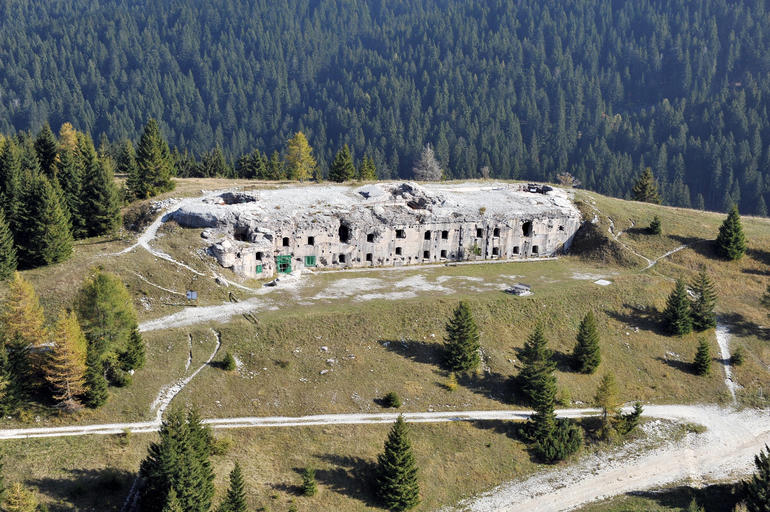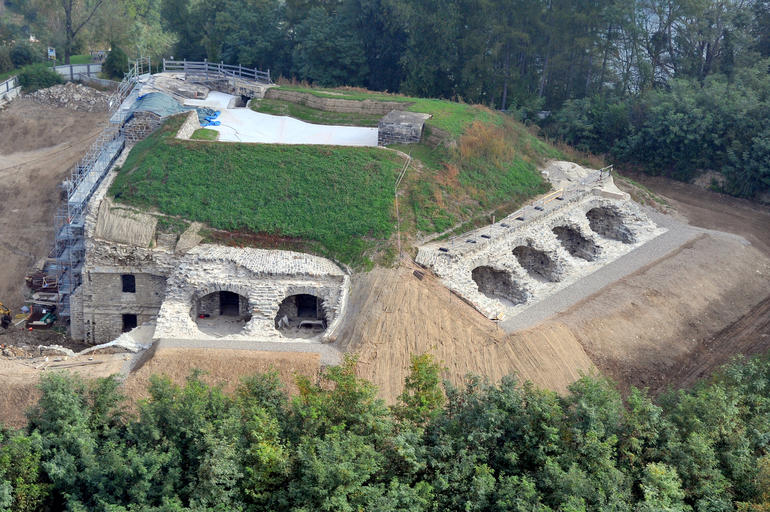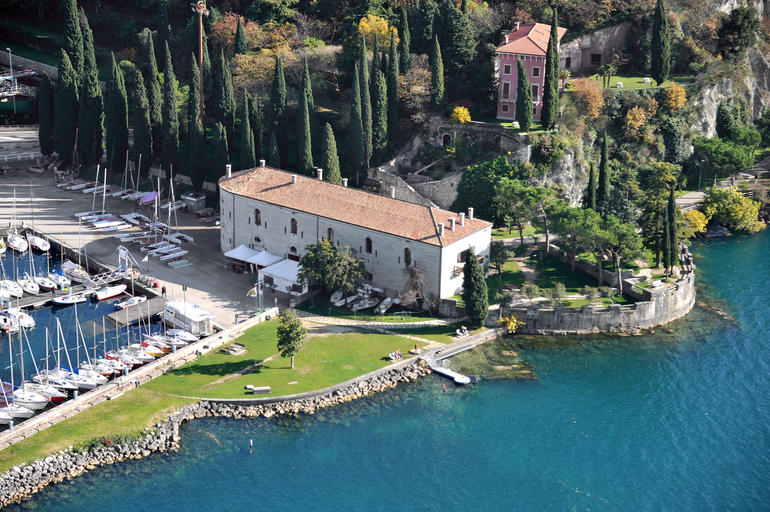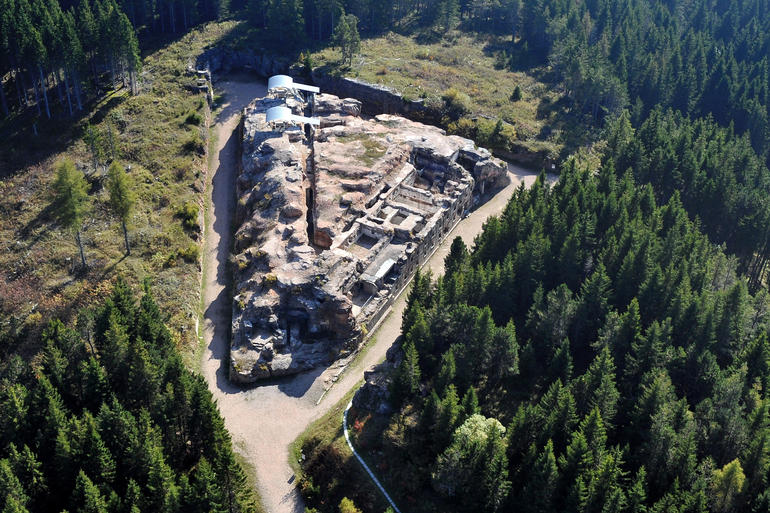Fortifications
Between 1869 and 1872, a fortified complex was built near the village of Civezzano, consisting of three works, placed to control the two roads that led from Valsugana to Trento.
Built between 1909 and 1912, Fort Belvedere functioned in conjunction with the Cherle-San Sebastiano Fort
This fort was part of the permanent group of Austrian fortifications which defended end enclosed the main connecting routes of the regional capital. Together with the blockhouse Doss Sponde, it was intended to form a rampart barrage, straddling the descending road from Cadine to Trento.
It was built at an altitude of 1445 metres in the Malga Cherle area on the higher plains of Fiorentini and was a barrage of the higher plains of Folgaria.
It is situated in an area slightly withdrawn from the edge of Mount Brione and blends in with the terrain, camouflaging itself, making it almost undistinguishable.
In order to defend the higher plains of Garda, a barrage was built at Nago with the aim of impeding every possible infiltration in the Adige Valley via the Nago-San Giovanni Pass-Mori-Rovereto route.
The “Batterie Roncogno” rose out of the hills on the slopes of Mount Celva, a little above the Cimirlo Pass
This fort is also called Fort San Biagio which is situated at an altitude of 660 metres on the same hill that overlooks Lake Levico. It was built by the Austro-Hungarians between 1880 and 1882.
Si trattava di un'opera posta a controllo di Passo Coe e del Pianoro di Malga Melegna.
It was built between the North Battery (Fort Sant’Alessandro) and Fort Garda
Venne costruito in riva al lago con la duplice funzione di tagliata e di batteria costiera.
It was one of the most powerful and well-equipped of Austrian Forts and was therefore nicknamed “Padreterno” (the eternal father) by the Italian soldiers.
